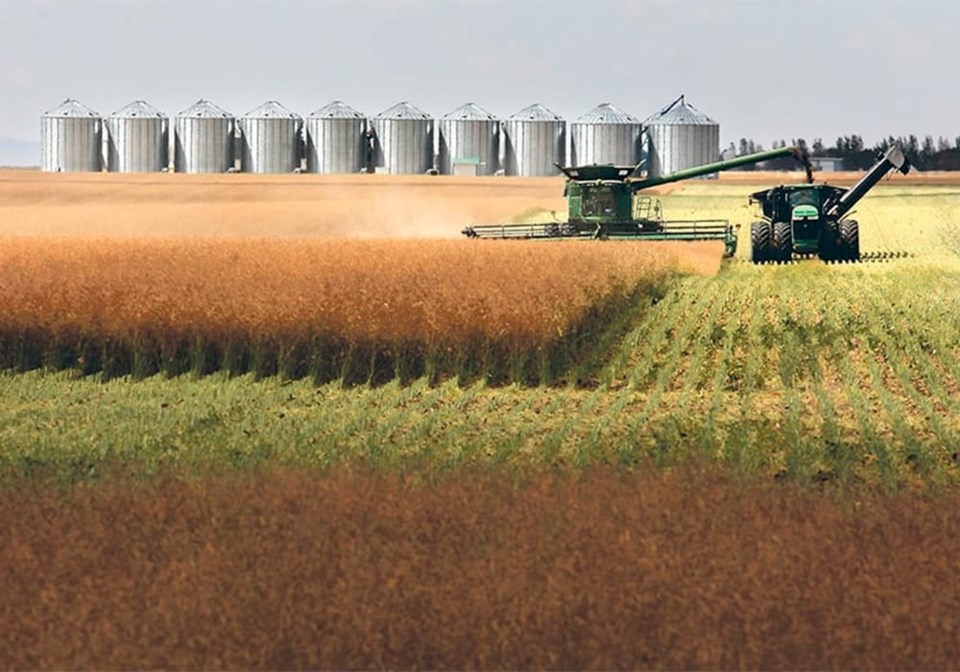WESTERN PRODUCER — Last year, verticillium stripe was found in 40 percent of canola fields in Manitoba.
That’s a huge number, considering the first detected case in Canada was found in 2014 at a farm south of Winnipeg.
The fungal disease has also moved into eastern Saskatchewan and is becoming a common problem in that region.
Verticillium is obviously spreading at a rapid rate, and a former Canola Council of Canada agronomist believes that straight cutting of canola is partly responsible.
“We cut through the inoculum source at harvest. So, we are cutting right through all the micro-sclerotia and they are going everywhere,” said Justine Cornelsen, the agronomic and regulatory services manager with BrettYoung Seeds.
Cornelsen spoke about verticillium and how it is spreading from farm to farm at the Manitoba Agronomists’ Conference held last month.
The fungus responsible for the disease, Verticillium longisporum, infects canola and produces tiny, pepper-like sclerotia in or on the stem of the plant.
They fall onto the soil and remain in the plant stubble after the canola is harvested.
“There are literally thousands of them in each stem that is infected,” said David Kaminski, a field crop pathologist with Manitoba Agriculture. “They’re like the size of a head of a pin.”
The fungal infection interferes with the uptake of water and nutrients in the plant. Symptoms include early ripening, plant stunting and leaf chlorosis, or yellowing of the leaf tissue. The symptoms usually appear late in the growing season.
The small size helps the disease move as wind and water carry infected soil and soil residue from field to field.
Contaminated machinery and people also transport sclerotia. The movement of the fungus is similar to clubroot, another soil disease of canola.
The major difference from clubroot is that straight-combining of canola is almost a standard practice in parts of Western Canada. That means verticillium has a few more weeks to infect the stem of the plant, compared to swathing.
“Being cut at harvest time, that inoculum, you’re releasing it to the environment,” Cornelsen said. “We’re not taking those (clubroot) galls and shaking them around.”
Some growers have noticed canola stems that are extremely weak at harvest time, Cornelsen added.
“Where normally they would cut once and feed in (canola), because they are so fragile and soft, they just start to wrap around the headers…. You’ve allowed that pathogen (to infect) up into the stem and to cause those really severe symptoms.”
Such issues were also seen in 2019, when wet weather delayed the canola harvest until October.
Now that verticillium has a foothold, canola growers will soon need varieties with genetic resistance to the disease.
Dilantha Fernando, a University of Manitoba plant pathologist, has been testing canola varieties to assess resistance. Results suggest that some cultivars on the market or in development could be moderately resistant.
“Just through my experience walking through cultivar trials, you do see differences,” Cornelsen said.
What’s missing is a consensus on how to measure the severity of a verticillium infection.
Other diseases, such as blackleg, have severity ratings and plant pathologists use them to understand the effectiveness of genetic resistance.
Cornelsen is chairing a group trying to develop a verticillium severity scale and other protocols.
“The industry understands… that there is likely a yield impact. We see it here in Manitoba. We can’t put a number to it yet, but we are seeing (some loss),” she said following her presentation at the agronomists’ conference.
“I think lots of (companies and canola breeders) are just waiting for an industry standard so they can actually screen their germplasm to that scale and then publish numbers.”

